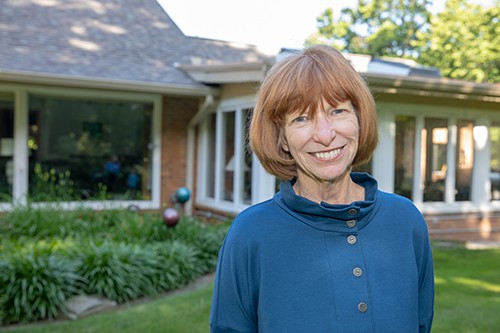
Nancy Choura, South Haven
Every winter, icicles plagued the leaky roof of Nancy Choura’s home, causing damage and posing a potential hazard. To make matters worse, the family was losing money trying to maintain stable temperatures, thanks to the 70-year-old lakeshore house’s poor insulation. So the family worked with Better World Builders to embark on a total retrofit. Through the improvements, the team removed two of the three natural gas furnaces, replaced the roof, upgraded ventilation ducts, and installed better insulation, removing the danger from mold and asbestos. The Choura family now expects to cut their energy bills almost in half, and their home is now healthier, more comfortable, and more valuable for the three generations who live there—and for generations to come.

Roy Cole, Holland
When Roy Cole and his wife Mary moved into their 1950’s Cape Cod home, they knew they wanted to make the home as efficient as possible and reduce their carbon footprint. After all, energy efficiency is a way of life for Roy, evidenced by his steadfast commitment to electric car usage, his compost pile, and his work as a professor of geography and sustainable planning at Grand Valley State University. It’s no surprise, then, that the Coles’ dedication to reducing energy waste hasn’t stopped at a couple of new appliances. Recently, Roy installed solar panels that generate almost half of the home’s electrical needs as well as ENERGY STAR® windows and better insulation throughout the entire home. Roy’s efforts have paid off mightily—he has been able to take advantage of incentives from the Holland Energy Fund and has already saved 950 therms and 60 percent of his home’s annual kWh usage.
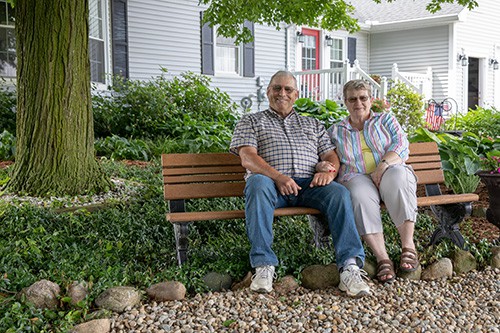
WINNER-James Stump, Lyons
James and Ann Stump—a farmer and retired schoolteacher, respectively—have lived in the tiny village of Lyons for years. While the community is close-knit and cozy, homes and businesses in the area lack access to natural gas infrastructure and must rely on delivered fuel. After a hike in propane prices, James and Ann decided to take control of their energy future. They hired a team from ESI Heating and Cooling (led by one of Ann’s former students) to get to work. A ground source heat pump system was installed in the home, complete with a Wi-Fi enabled thermostat and a high-efficiency tankless propane water heater. Because of these efforts, the Stumps reduced their annual electricity usage by 3,264 kWh and their annual propane usage by 1,678 gallons, shrinking their carbon footprint by an amazing 80 percent.
BEST PROJECTS—PUBLIC
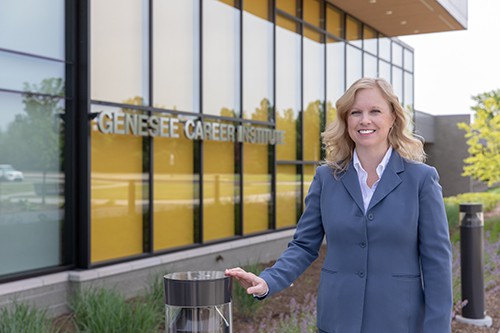
WINNER-Genesee Intermediate School District, Flint
Each day, more than 67,000 students and almost 8,500 educators step foot into one of Genesee Intermediate School District’s (GISD’s) buildings to provide or receive state-of-the-art education. The GISD wanted its 21 public school districts and 13 charter schools to be just as state of the art, so they set out to reduce energy usage and lower operational costs. HVAC equipment was installed, parking lot lights were converted to LED lights, and buildings received new insulation. Additionally, three new 15-ton packaged rooftop units and a new energy management system were installed at Flint’s Base Camp Challenge Center, which offers innovative team-building opportunities for schools, nonprofits, and other organizations. All in all, the GISD expects to save over 177,000 kWh of energy and over $20,000 each year—and take its place as a shining example of what can happen when school districts invest in energy efficiency.
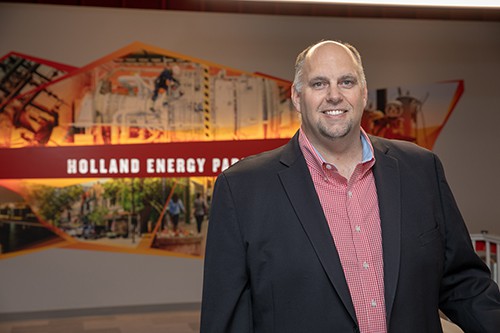
Holland Board of Public Works, Holland
The city of Holland has long been a leader in energy efficiency. The October 2017 opening of Holland Energy Park (HEP), the city’s first sustainable electric power generating resource, was the culmination of years of unprecedented efforts to conserve even more. After gathering input from over 30 community stakeholders through a third-party study, the Holland Board of Public Works (BPW) formed a blue-ribbon panel of community leaders to design the 145-megawatt combined-cycle plant. The HEP is twice as efficient as the coal-fired plant it replaced, and has cut greenhouse gas emissions in half. City residents can enjoy cleaner power, and Holland can boast yet another world-class example of its unwavering commitment to smart energy solutions.

Van Buren Intermediate School District, Lawrence
To pursue their mission to provide education for a better tomorrow, the Van Buren Intermediate School District (VBISD) knew they had to think outside of the box. They decided that educational success wasn’t constrained to curricula and books, and wondered if energy efficiency could lead to better buildings as well as happier students and teachers. After completing a Consumers Energy analysis, the VBISD set out to pursue energy improvements that would not only save money and reduce energy waste, but also improve staff and student morale. New controls systems made rooms more comfortable, and LED lighting made buildings more secure. The VBISD intends to pursue future energy-saving projects with the savings captured from these improvements—$55,250 to be exact—and continue serving their community’s children for years to come.
BEST PROJECT—AGRICULTURE

WINNER-Continental Dairy Facilities, LLC, Coopersville
Continental Dairy Facilities is a fast-growing dairy processing plant that partners with one of the largest dairy co-ops in the nation. The company has already won several awards, such as the Exporter of the Year Award from the Michigan Department of Agriculture and recognition as one of the Top 100 Dairy Companies by Dairy Foods Magazine. But processing over 300,000 pounds of dry milk every day doesn’t leave a light footprint, so maintenance manager Chance Rupe quickly got to work assessing the company’s energy consumption. What he found were opportunities to make the agriculture exporter’s lighting and chiller far more energy efficient. So he sought out rebate programs and incentives through Consumers Energy and set into motion the upgrading of much of the plant’s equipment. Through these efforts, Continental Dairy Facilities stands to save a staggering 1,763,543 kWh per year—a lifetime savings of 35,260,860 kWh.
BEST PROJECTS – INDUSTRIAL/MANUFACTURING

WINNER-ArcelorMittal, Detroit
When the auto steel supplier ArcelorMittal unveiled its Detroit manufacturing facility in early 2018, the company wanted to claim more than bringing new jobs and industry to the area. They wanted to become an anchor in the city’s industrial park by rehabbing something that was already there. The end product? An energy-efficient plant located in a repurposed 90-year-old historic building, avoiding the environmental impact of a greenfield project. The $53 million investment cemented one of ArcelorMittal’s core values—providing high-quality products without sacrificing sustainability. Among other additions, the construction of the plant included over 400,000 square feet of new insulation, new LED lighting, and high-efficiency heaters and fans, allowing the plant to make its debut as a safe and highly efficient addition to the Motor City. These upgrades are expected to lead to savings of over 22,000 cubic feet of natural gas and almost 850,000 kWh each year.
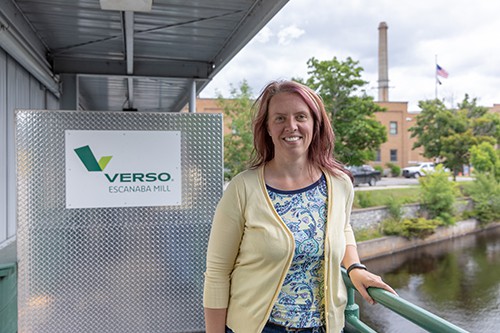
Verso Corporation, Escanaba Mill
For over a century, Verso Corporation has stood as one of Escanaba’s bedrock employers, employing over 800 people. Just as the company serves as a foundation for the Upper Peninsula city, sustainability is at the foundation of Verso’s values. As a process, papermaking isn’t exactly the cleanest energy-sipper, so whenever possible, the company aims to reduce environmental strain and energy waste. That’s why Verso decided to build on the success of its past sustainability projects and improve efficiency and natural gas usage by upgrading its air system. The mill can now burn more of the material generated during the pulping process of making paper and operate more efficiently. Not only does Verso anticipate saving over 95,000 Mcf each year, they will likely realize over $330,000 in annual savings.
BEST PROJECTS—COMMERCIAL (PRIVATE)
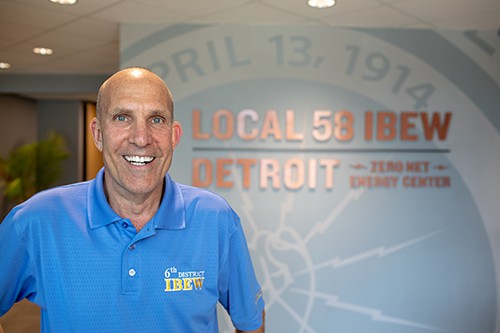
WINNER-IBEW Local 58, Detroit
Located in Detroit’s historic Corktown neighborhood, the IBEW Local 58 serves 4,700 members throughout Southeast Michigan. After deciding to commit to energy efficiency, the headquarters of IBEW Local 58 quickly took its place as the largest net-zero energy center in the state of Michigan. To get there, it took an incredible effort from dozens of Michigan businesses—as well as more than 500 LED lights; 600 solar panels; energy-efficient windows and doors; a structural insulated panel system; and much more. Through this project, the headquarters increased its ENERGY STAR® rating from 37 to an impressive 95, ranking them in the 95th percentile of buildings in similar climates. The building also reduced energy use by 76 percent, and IBEW Local 58 expects to lower their annual electric bill by an incredible $56,957.
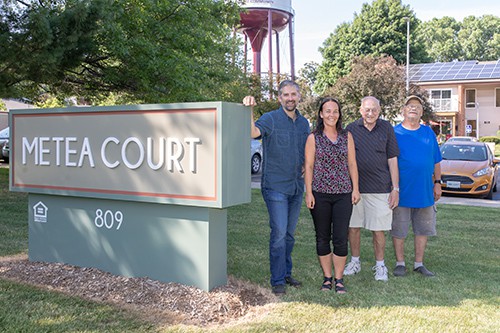
Metea Court Apartments, Buchanan
Many seniors with fixed incomes call Metea Court Apartments home. But the 100-unit community in Buchanan, Michigan, desperately needed an overhaul; its energy and water systems hadn’t been replaced since the apartments were built in the 1970s. After acquiring the property, Hollander Development Corporation recognized the need for improvements and got to work. They gathered top-notch builders and designers to approach the upgrades holistically, looking to save money and energy as well as make the units safer and more comfortable for residents. Ultimately, through installing LED lights, replacing old fixtures with new equipment (like shower heads and ENERGY STAR® appliances), caulking, air sealing, and more, Metea Court Apartments expects to save over 65 percent of their energy—and about $150,000—this upcoming year.
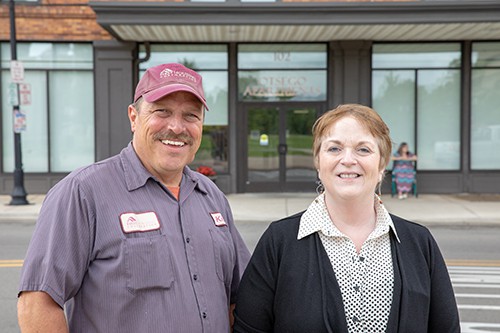
Otsego Apartments, Jackson
Like many older buildings, Otsego Apartments was showing its age. As the former site of a turn-of-the-century hotel, the property boasted tremendous historical value, but wasn’t providing as much value to its low-income senior residents. So in 2017, Otsego Apartments underwent a renovation with the goals of reducing operating and maintenance costs, reducing energy bills, and lowering greenhouse gas emissions. The project included the installation of new windows, ENERGY STAR® appliances, and LED lighting as well as the replacement of old toilets and an outdated hot water boiler. Through this overhaul, Otsego Apartments expects to save 147,673 kilowatt hours (kWh) of energy and over $20,000 each year, all while helping people live in safer, more comfortable residences.
CONTRACTOR OF THE YEAR
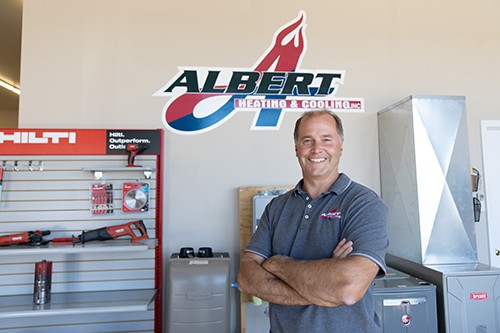
Albert Heating & Cooling, Sault Ste. Marie
The harsh winters of the Upper Peninsula can be off-putting to many people, but not the workers of Albert Heating & Cooling. They believe that no matter how tough the conditions are outside, homes can be energy efficient, safe, and comfortable inside. To achieve these results, owner Todd Albert ensures his staff is always at the cutting edge of energy efficiency. He regularly sends them to manufacturers’ trainings and ensures technicians hold North American Technical Excellence certifications. This deep commitment to best practices allows Albert Heating & Cooling staff to reduce their customers’ reliance on inefficient electric heating systems and propane and shift to high-efficiency furnaces and air source heat pumps. In fact, in 2017, the company installed more of these systems and furnaces than any other contractor in the area. So far, that work has paid off. Their customers have saved more than 15,000 therms of natural gas and 49,490 kWh of electricity each year.
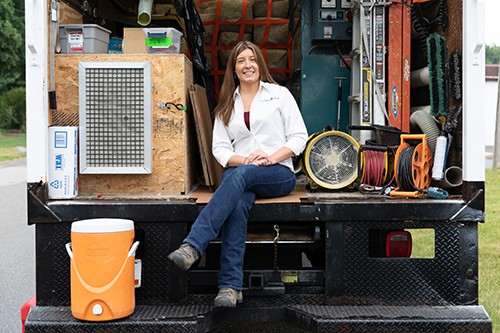
Ecotelligent Homes, Farmington Hills
When Amanda Godward founded Ecotelligent Homes in 2009, she dreamed of using smart science and excellent customer service to bring energy efficiency into Metro Detroit homes. Now, guided by Amanda’s engineering background, Ecotelligent Homes has evolved from a ground-floor vision into a cutting-edge company with a small, passionate staff. Despite being less than ten years old, Ecotelligent Homes is already an industry leader. Staff members have attended and presented at conferences hosted by the Home Performance Coalition; they have also won multiple awards, including Consumers Energy’s Sustained Commitment to Excellence and the 2018 Residential Contractor of the Year award from the Michigan Energy Efficiency Contractors Association. But most importantly, Ecotelligent Homes’ impact is seen most in its residential work. Since its founding, the company has completed energy-efficiency projects in more than 600 homes. On average, customers experience an average of 35 percent efficiency improvement, making homes safer and more comfortable all around.

WINNER-WMGB Home Improvement, Wyoming
Throughout West Michigan, WMGB Home Improvement is known for its thorough energy audits and 35-year reputation for unbeatable quality. The company’s team of Building Performance Institute–certified auditors work with programs, such as the Holland Home Energy Retrofit Program, to bring significant energy (and cost!) savings to their customers’ homes. While the company specializes in window installation, their work with these programs incentivizes homeowners to include air sealing, insulation, HVAC equipment, and energy-efficient appliances in their projects, too. This holistic approach to reducing energy waste is paying off; in 2017 alone, WMGB Home Improvement completed more than 600 assessments and 200 retrofit projects, saving an estimated 114,450 therms of natural gas and almost 55,000 kWh of energy each year.
INNOVATOR OF THE YEAR
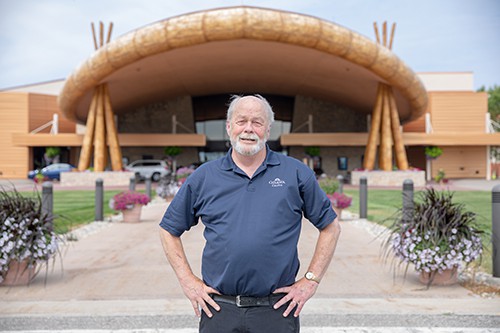
Dave Heinz, Petoskey
The Little Traverse Bay Bands of Odawa Indians’ mission is to respect, honor, and care for Mother Earth and her families, keeping the next seven generations in mind. As the Odawa Casino Resort’s lead electrician, Dave Heinz takes these words to heart. He believes energy efficiency is integral to caring for our planet. Since the early 2000s, Dave has undertaken energy-efficiency projects that have cut the casino’s electricity usage by 34 percent and natural gas usage by 43 percent—that’s a whopping 5.8 million kWh and over 35,000 kWh each year. But Dave’s reach extends far beyond the walls of Odawa Casino Resort. He regularly presents at events and conferences and visits middle-school classes around Petoskey to talk about the power of energy-conscious behaviors. Dave has even shared his expertise and strategies with competitor casinos, helping them reduce their energy waste by about 10 percent in their first year of embarking on energy projects.
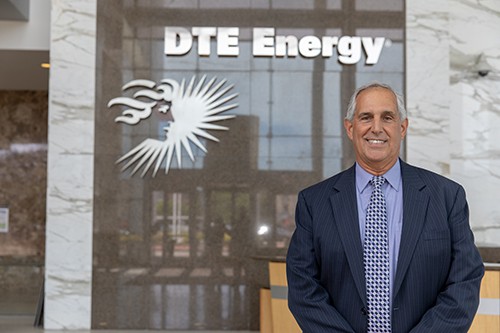
Kenneth Randazzo, Detroit
For years, the DTE Energy Efficiency Program for Business struggled to obtain the participation it envisioned for Michigan’s food service community. It was difficult to offer a good enough incentive for restaurant owners to upgrade their old energy-hogging equipment. After all, there was a bustling market of cheap used equipment to compete with, and the cost savings on the newer, more efficient restaurant appliances was, comparatively, pretty slim. That’s when Kenneth Randazzo stepped in. He realized that the program’s approach needed to change, and that simply increasing incentives wouldn’t be cost-effective or sustainable in the long run. So Kenneth transformed the program’s strategy. By working with dealers directly, the program now applies incentives at the time and point of sale. Thanks to Kenneth’s efforts, DTE’s business program now serves as a benchmark for other states and utilities across the nation. It also saves more than an estimated 6,500 Mcf and 1,580,000 kWh of energy each year.
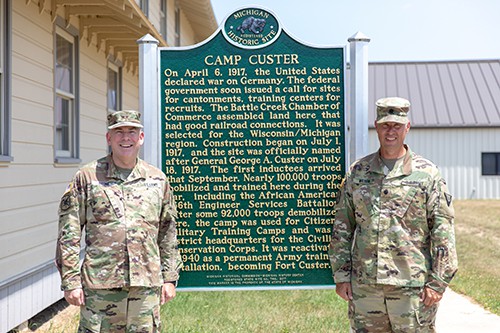
WINNER-Major General Michael Stone, Lansing
The Michigan Army National Guard hasn’t always been top of mind when people think about energy efficiency, but Major General Michael Stone has spent the last several years changing that perception. Since his 2011 appointment to Assistant Adjutant General for Installations, he has championed the reduction of energy waste. For example, Major General Stone oversaw a series of investments in innovative energy technologies at Fort Custer in Augusta, Michigan. By working with key stakeholders from the military, surrounding community, and private sector, the Michigan Army National Guard secured more than $3 million to fund a microgrid, solar array, battery storage system, and experimental wind funnel. Not only are these massive improvements saving money and energy, but they also ensure the site can continue operations during times of grid failure. Thanks to Major General Stone’s work, the Michigan Army National Guard is now a prime example for how energy efficiency can make our world safer.
BEST PROGRAM
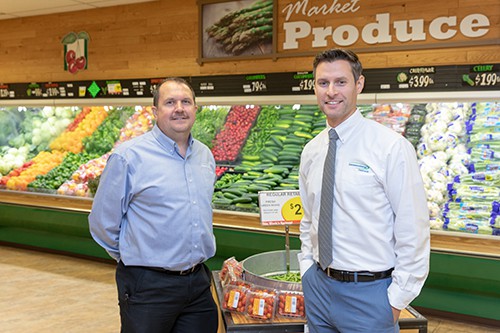
EnergySmart Grocer, East Lansing
Spearheaded by Consumers Energy, the EnergySmart Grocer program aims to help convenience and grocery stores assess their equipment’s energy usage, particularly their refrigeration units. This program helped predominately independent stores in rural areas across Michigan, ultimately gathering participants from 51 of the state’s 83 counties. In 2017, program staff conducted energy assessments in more than 200 stores, with each store receiving a detailed report complete with available energy-efficiency options. Overall, 73 stores chose to move forward with investments in newer equipment (refrigeration and lighting), saving a cumulative 4.5 million kWh and garnering over $400,000 in rebates. Further, Consumers Energy plans to maintain relationships with program participants to assist with any future improvements. As Tim Schneider of Copemish Family Market said, “Now that the project is complete, the store looks like a million bucks.”
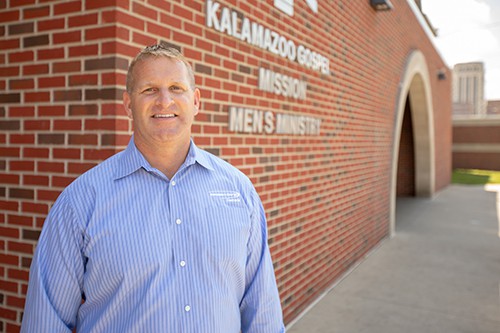
WINNER-Homeless Shelters Initiative, Okemos
Like many other nonprofits, housing shelters typically don’t get to invest in energy-efficiency measures, as every last dollar in the budget is stretched to the limit to cover basic resources. Consumers Energy had a vision to change this. Enter the Homeless Shelters Initiative—an offshoot of the company’s Small Business Nonprofit Energy Efficiency program. Through the initiative, the utility designs, implements, and supplies labor and resources for crucial energy-efficiency projects at little or no cost to shelters. In fact, Consumers provided $2.8 million last year to improve the energy performance of almost 40 shelters around the state. Upgrades included lighting, boiler, water heater, and furnace work. Because of this program, several homeless shelters are safer, more comfortable, and more energy efficient, and staff can spend newly freed-up dollars where they matter most—on the people who rely on their services and compassion.
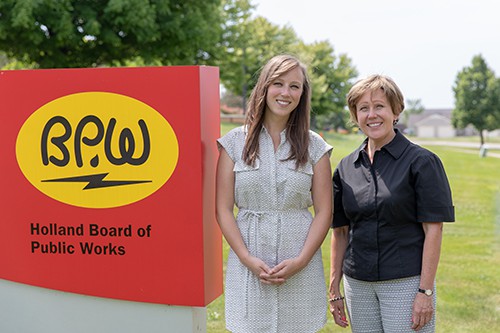
Residential Energy Performance Labeling Pilot Program, Holland
Using the city’s 40-year Community Energy Plan as a foundation, in 2017 the Holland Board of Public Works developed an energy performance labeling program. Stakeholders had long envisioned a program that would streamline the process of obtaining a Home Energy Score from the U.S. Department of Energy. They also wanted this program to save contractors and customers time and money and allow the city to better track progress toward its energy waste reduction goals. An expansion to the Department of Energy’s Home Energy Score database allowed the program to finally take shape, and last year, almost 100 customers received their before-and-after home scores for just $75. Throughout the process, several participating residents also discovered—and remediated—safety issues like outdated wiring, poor ventilation, and asbestos. The Holland BPW envisions this program serving as a model for other communities across the nation, ideally encouraging customers to understand and act on their home’s energy performance.

